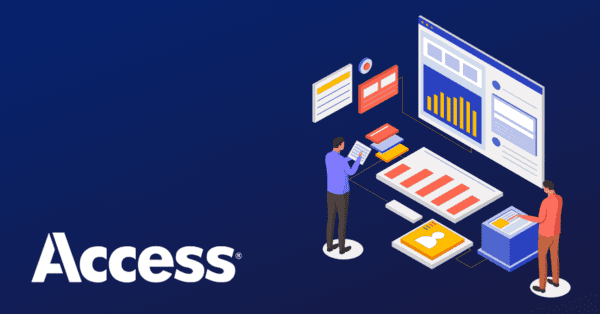
Most departments, including records management, are using anywhere from 40 to 60 different applications to manage their day-to-day activities.
Within the next 4 years, Gartner predicts that we’re going to see a dramatic shift from using multiple Software as a Service (SaaS) applications to using fewer applications that centralize the management of activities.
The combination of increasing cloud storage costs and overall decreasing budgets due to a variety of influences makes choosing and investing in the right technology a much higher-stakes proposition than it was a few years ago.
In this week’s blog, we’ll explore how to build a business case for adopting a centralized document management platform to manage records.
Step 1: Identify the Business Problem
The first step of an effective business case isn’t about technology.
It’s about identifying the problem that needs to be solved.
Technology is intended to solve a particular problem or set of problems. Understanding the challenge is the first step to finding the best solution ahead of any investment.
Unfortunately, what people end up doing is buying first, implementing later, and then discovering that they’ve got expensive, and oftentimes, very, very expensive failed technology installations.
One example of a business that tackled its challenges logically and successfully was Eclaro. Eclaro, a global staffing organization, was dealing with a paper-intensive process that simply wasn’t scalable.
For starters, Eclaro’s remote teams did not have secure, easy access to documents. This caused work to be delayed and hampered productivity. Additionally, the processes themselves were labor intensive and increased the chances of losing or mishandling paperwork. Once Eclaro had thoroughly identified their issues, they realized they needed a document management solution that integrated with their ERP so they could service clients more quickly, efficiently, and with a higher degree of accuracy. Read more about Eclaro’s story here.
Step 2: Creating the Business Case
When crafting the business case for investing in document/records management software, you should focus on concrete benefits to the whole organization, not just single departments.
For instance, a centralized document/records management software can help with:
- Cost savings – By reducing the number of employees required to complete manual tasks, document management software reduces costs associated with hiring new staff members.
- Improved productivity – Automation allows employees to focus on higher-value activities while freeing up time to work on projects that require human attention.
- Increased efficiency – With automated processes, workers spend less time searching through paper files and manually entering data into databases. This frees them up to do more productive, higher-value work.
In another case study example, when American Seafood Group was looking to reduce the amount of time that its HR department and employees were devoted to administrative functions, they focused on the improved impact that HR teams could have if they weren’t bogged down in employee paperwork, compliance, and crew orientation.
Digitizing their paper-based process through a centralized document management software solution, they were able to reduce time spent on admin tasks by 35%. Learn more about their successful experience here.

Beyond Storage – A Comprehensive Information Management Checklist
Organizations of all kinds and sizes are finding themselves faced with an array of information management challenges. Some of these challenges, like the transformation of information technologies and the growth of data sets, have remained relatively unchanged for years.
Step 3: Evaluating Records Management Software Solutions
Every technology has some upsides and some downsides, with constant risks and challenges.
Balancing those risks with the needs you’re trying to serve is an exercise that you absolutely must go through and it is not an easy one.
No solution has an “easy button”, as much as we’d love that to be the case.
Traditionally, any form of an easy button ends up being the next generation of technology, whether that’s imaging systems, cloud-based computing, or the next hot tech.
Therefore, the best advice we can give is simple:
You should not invest in any technology before doing significant planning and understanding of what problem(s) you need to solve and how it can be solved by specific records/document management software.
That makes it all the more important to spend time during step 1 evaluating the exact problem you’re looking for software to solve.
Step 4: Implementing and Maintaining
The final two steps, implementing the software solution and maintaining it are likely going to be the largest investment and most time-consuming part of your process as it tends to stretch on for long periods.
Following are some ways that you can make the implementation and maintenance processes more seamless:
- Keep the team together – During the process of creating the business case, you will undoubtedly involve a variety of stakeholders in the process. Keep that team meeting regularly to do check-ins on what’s working and what isn’t to ensure the smoothest implementation possible.
- Train, then train again – Research shows that “the average company has 254 applications, but regular usage among employees remains low”. Training regularly and incorporating your new process into employees’ day-to-day activities can maximize adoption rates.
- Communicate your wins – When going through the implementation process, you’re likely to get some quick wins and improvements that happen quickly. Be sure to celebrate those wins even though it may take a while to recognize the full results.
Curious to learn more about choosing a document/records management software that will help your organization solve its most pressing information management issues? Request a demo or arrange a discussion with one of our solutions specialists today!




